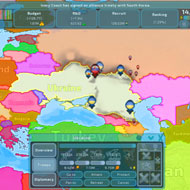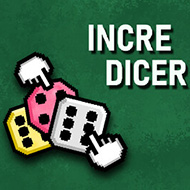
CloverPit is a resource-based puzzle and management game that challenges players to cultivate a thriving ecosystem within a contained space. Each action influences growth patterns, creating a balance between expansion and stability. The goal is to build an interconnected network of plants and energy sources while preventing resource depletion.
Resource Management and Growth Patterns
In CloverPit, the player begins with a small plot filled with limited energy nodes. Each decision—planting, expanding, or harvesting—affects the surrounding tiles. Every move requires consideration of chain reactions that can either fuel growth or destabilize the entire pit.
- Energy nodes: Power nearby tiles to support growth and expansion.
- Nutrient cycles: Maintain balance between harvesting and planting.
- Spatial awareness: Optimize available space for maximum resource output.
Because actions directly impact neighboring cells, even minor choices can lead to cascading outcomes. Learning how to balance short-term gain with long-term sustainability defines the strategy.
Environmental Variables and Chain Reactions
The environment within CloverPit changes dynamically. Growth patterns react to tile combinations, light exposure, and underground energy movement. Mastering these elements requires patience and experimentation rather than speed or reflex.
- Tile synergy: Combine compatible plants for exponential growth rates.
- Energy diffusion: Spread power carefully to avoid resource waste.
- Hazardous decay: Prevent overgrowth to stop pit collapse or corruption.
Because each playthrough generates a unique arrangement, repetition never feels static. Adjusting to changing patterns creates both challenge and variety, keeping the experience fresh across multiple sessions.
Upgrades and Adaptive Strategy
Progression in CloverPit comes through unlocking advanced tools and modifiers. Players can enhance soil strength, energy capacity, or growth speed by spending accumulated resources. Each upgrade adds a new layer of control that supports creative problem-solving.
- Growth enhancers: Boost plant output for limited durations.
- Energy amplifiers: Increase power radius for interconnected systems.
- Stability cores: Reduce decay rates and extend resource longevity.
Balancing upgrades ensures survival across longer cycles. Over-investing in growth without improving sustainability often leads to collapse, teaching players to think systematically about every resource exchange.
Replayability and Optimization
The replay structure of CloverPit relies on experimentation. No strategy remains optimal for long because environmental variables constantly shift. Learning through observation and adjustment is key to mastering deeper layers of interaction.
CloverPit succeeds in blending planning and reaction into one continuous process. Each run encourages smarter use of limited space, rewarding efficient design and careful foresight. The calm pacing and intricate cause-effect systems make it both thoughtful and endlessly engaging.






























